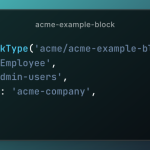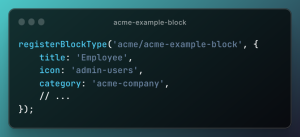
SEO for Dentists? You heard it right! If you have a dental blog for your profession or passion, you should implement some SEO strategies to get it noticed by your targeted audience through organic traffic in search engines.
Creating a beautiful website and having awesome content is just the start! if you’re aiming for the top spot in search engine results, SEO is your trusty sidekick. Without mastering the art of SEO and putting it into action on your website, getting the #1 rank is like chasing a rainbow.
So what should you do exactly? Should you focus on keyword research, interlinking, or optimizing content (confusing, right)? Finding an SEO roadmap is tricky! Don’t worry because I’m here to lend a helping hand. Yes! I’m an SEO freak with more than 10 years of experience.
I built my first WordPress blog in 2012, scoring top ranks in Google results. I can tell how to do the SEO for dentists. Moreover, I have followed the same strategies for two dentist clients. Follow these guaranteed SEO tips for dentists and grab top spots in search results.
Table of Contents
- 1 Why You Need To Focus On Your Dentist Blog SEO?
- 2 Guaranteed SEO For Dentists (10 Proven Tips)
- 2.1 1. Do Proper Keyword Research
- 2.2 2. Identify Your Target Audience
- 2.3 3. Engage Your Audience With Visuals
- 2.4 4. Keep Titles Catchy & Optimized
- 2.5 5. Add Human Touch To Content
- 2.6 6. Implement On-Page Optimization
- 2.7 7. Optimize Images For The Blog
- 2.8 8. Link To Relevant Websites
- 2.9 9. Interlinking – The Game Changer
- 2.10 10. Must Add CTA To Your Content
- 2.11 Bonus SEO Tip – Track Keywords
- 2.12 Advanced SEO For Dentists
- 2.13 How To Improve Your SEO Ranking?
- 2.14 What Are The Don’ts of An SEO Blog?
- 2.15 Wrapping Up The SEO For Dentists
- 2.16 Share this post
Why You Need To Focus On Your Dentist Blog SEO?
Before we dig deeper into SEO, you should know its importance first. Your blog is a hidden treasure chest filled with valuable information about teeth-related things, and SEO is the map that guides those seeking your treasure straight to your site.
Without a map, I don’t think anyone can get this treasure chest. What’s the lucky part is you’re the one who can create this map! The better you nail your SEO game, the more chances are your content will get top ranks for the targeted keywords.
It happens because SEO shows Google what the content is about, what’s the topic, and what you’ve explained. When we write about a topic, we find keywords (search terms) and untapped keywords ( search phrases that no one is working on) that people need answers to.
After finding the keywords, we optimize content by adding them to the content naturally. If you do this process right, BINGO! Your dental-related blog posts will rank; otherwise (I hate to break this news), everything (all your unoptimized content) will go in vain.
Guaranteed SEO For Dentists (10 Proven Tips)
Since you’ve got the idea of why you need to focus on SEO for dental blogs and why it’s important, let’s move towards the main part – the Roadmap to ranking in the #1 – #3 positions with the help of 10 best SEO tips for a dentist blog.
1. Do Proper Keyword Research
Doing proper keyword research is the foundation of your blog’s SEO structure. Like a dentist needs the right tools for every procedure, your site needs the right keywords to attract focused readers.
Effective keyword research helps you understand the language your potential readers are using when searching for dental advice, tips, and solutions. It’s about speaking their language and ensuring your blogs match their queries.
The issue is, that most bloggers (including the dentist niche) only rely on keyword research tools. I’ve nothing against the tools, but as per my experience, they’re not 100% accurate. Now, this doesn’t mean you shouldn’t use the tools.
The only point is to go the extra mile and combine manual research with keyword tools. Get a list of low-competition keywords (those with low keyword difficulty as per the data of the keyword research tool). I use SEMRush to get this job done. Check the screenshot below!

You can do this easily using the filter tag (check the above picture to understand). Every keyword research tool allows you to use this filter tag. When you click on Easy 15% – 29%, you’ll only get easy keywords to rank, and the ranking difficulty is 15% to 29%.
After getting all low-competition keywords, select them and download the keyword file. Open this keyword file in Google Sheets and do the keyword research manually to filter the best keywords. Here’s how I do manual keyword research:
- Check the keywords manually on the Google search bar with the “allintitle” tag. Add your keyword beside the tag (allintitle: write your keyword here) and search.
- Find out how many websites have worked on this keyword. I have taken the keyword – Tooth With Root Canal Hurts With Pressure” from the list of “Very Easy.” It has a monthly search volume – 1900, and the KD score is 14. Check the results!

- Since there are no competitors, your content will surely rank. You may get 5, 10, or even more results depending on the websites that have created blogs for the keyword. Don’t pick the keywords with more than 10 to 12 results from established websites.
- Follow the same process again and again to check all keywords. Only select those that have less competition. The more competitors you have (especially established websites), the more difficult the ranking will be.
2. Identify Your Target Audience
The next important SEO tip is identifying your audience and understanding search intent to know what your readers want. It’s crucial for blogging, but unfortunately, most bloggers neglect it, which often leads to bad ranking.
A few months ago, I got a client for SEO service; he was uploading good content and working on good keywords, but still, the articles weren’t ranking. I checked the blog and found out the content wasn’t targeted to the audience (the keywords were good).
The keyword was the “best camping backpack for the solo traveler”, and he started the intro with how good it is to travel solo and the purpose of a backpack. The mistake was very basic; the articles weren’t targeted.
Understand that if a person is searching for the “best camping backpack for the solo traveler”, it means he already knows the benefit of solo traveling. Also, he passed the stage of understanding the benefits of a backpack as he was searching for one.
After I made some changes in articles to match what people were looking for, the website’s position improved in a few weeks. You’ve to do the same thing: ensure if the search intent is about whitening teeth at home, provide a solution for it, not for gums.
3. Engage Your Audience With Visuals
If you want to know about the secret of my dental website ranking, it depends greatly on the visuals. When I started optimizing my blog, I realized that breaking down the dental jargon and making it visually appealing was the key. User experience is an SEO strategy.
People don’t always want to read a wall of text – they want to see, understand, and engage. That’s where visuals come into play. I always use topic-related infographics and stats charts to demonstrate dental techniques better.
Here are a few examples that I have done for you! Look at the first infographics, I have designed the tips with suitable icons to catch more eyeballs. The second image example is a chart, where I have entered the dental-related data in a chart.


You can do this yourself by using software like Adobe Illustrator or Canva. Otherwise, the best is to hire a graphic designer (if you have the budget). Trust me; you’ll be surprised by the results because your website won’t only rank for content but also attractive images.
4. Keep Titles Catchy & Optimized
Another important tip I follow and always suggest to everyone is to keep titles catchy and optimized. Think of yourself. Would you click on content with a title that only contains: “What German Shepherds Eat” in the title or prefer results like the image?

If your answer is the blog posts of the image, this is how the audience thinks. The reason why people click on the image results is that they’re more catchy than the simple title of “What German Shepherd Eat?” Here’s how to keep your titles catchy:
- Include the main word naturally. It’s the key to clicks.
- Keep it brief and straightforward (maximum 50–60 characters)
- Address an issue and give a solution.
- Use power words, and don’t overdo descriptive words.
- If possible, use numbers.
5. Add Human Touch To Content
Understanding dentistry, or any medical field, is tough, and it will become harder when you talk about the topic like an expert. Remember, not everyone reading your articles is an expert; a dentist might understand you, but not normal people.
To provide the best answer, you have to start from a very basic level and ensure the content has a human touch. Use simple words to write answers, use a conversational tone, ask questions, add personal insights, or even inject humor.
This will make content digestible to readers (especially those not from the dental field). When users like content, Google will start ranking your article on top for keywords; that’s how your human touch helps in SEO.
6. Implement On-Page Optimization
The next thing I want to suggest to you is on-page optimization of content. This might look difficult at first, but with practice, you can learn the technique easily. Follow my tips to understand how I optimize articles on my blog:
- Put keywords naturally in the title, headings, and content.
- Craft compelling meta descriptions for higher clicks.
- Break content into clear, structured sections (use heading tags properly).
- Connect related posts within your blog.
- Keep URLs short, relevant, and reader-friendly, focusing only on the main keyword.
Bonus Tip – Download Yoast SEO or Rankmath plugin to make the content optimization plugin more easy.
7. Optimize Images For The Blog
As I said, one of the biggest reasons behind the success of my website is the visuals. But do you know visuals are nothing if you don’t optimize them? Yes, like content, images also don’t rank without proper optimization.
The good thing is image optimization is easy, especially with plugins like WP Optimizer or Smush Pro. Download the plugin from the WordPress library, and make sure the settings shown in the image are enabled.

By doing this, all images on your dental blog will be compressed automatically. Then, whenever you add an image, click on it, and a new tab on the side will open where you’ll see the option Alt text (alternative text).

In the Alt text column, give your image a name and change the width and height. Bear in mind that the image name should be relevant. For example, if you’ve added an infographic about how to clean baby teeth, the image should also contain this name.
8. Link To Relevant Websites
Here, I’m discussing external links (not internal ones), which means the links you add to content from other websites. These links lead your readers to trusted sources. A simple example of this is review articles.
If you’ve read a review article about a product, you must know that it contains links to Amazon or other similar platforms. Readers read the product review and trust the blogger by clicking those product links.
These links are helpful; first of all, the article is about those products. Then, the links help the readers find the Amazon product mentioned in the review. So Google likes these external links.
The situation will be different if you add links to the best toothpaste in an article discussing the benefits of mouthwash simply because the user is interested in mouthwash, not in toothpaste.
This is why I only suggest linking to relevant websites. Add as many external links as you want if they’re quality links and suitable. If the link isn’t suitable, it will cause more harm than benefits to your website.
9. Interlinking – The Game Changer
Besides external linking, you should also focus on interlinking. Internal links are links within your website’s pages (not from other websites). To understand the example, have a look at the screenshot.

As shown, this Wikipedia article about WordPress has a link (internal link) to its other page about “Web content management systems.” It’s a helpful link because if a reader is interested in knowing web CMS, he can easily jump to that page by clicking.
They’ve not added an internal link about “what’s good content” in this line. You also have to do the same. Interlink two similar articles, like this “How to brush your teeth”, to another article “best brushes to clean teeth.”
10. Must Add CTA To Your Content
Lastly, don’t forget to add CTA to your content. CTA means a call-to-action; it can be anything depending on your goals, like appointments at the clinic, a consultancy call, etc. To understand what CTA you should add, ask yourself why you created the dental blog.
If your answer is appointments or marketing of your clinic, incorporate this CTA in blog posts. For example, while writing about an oral health problem, share some of your info, your past experiences, and the offer of consultancy or appointment.
Bonus SEO Tip – Track Keywords
Google Search Console and Google Analytics are your best friends throughout the blogging journey. It allows you to see what keywords the content is ranking and what are the impressions and clicks. The best part is the data is 100% accurate.
So, track the keyword by clicking on it and check the ranking. If it’s going down, the best is to analyze competitors and update the content accordingly. Lastly, don’t forget to build quality backlinks by writing supporting articles for other websites (only in the dental niche).
Check my article about the integration of Google Analytics and Search Console to your dental site.
Advanced SEO For Dentists
So far, we have seen the essential SEO for dentists. As an SEO expert, let me share some advanced tips so that you can outperform your competitors in search engine results.
- Make Your Pages Load Fast – A fast-loading site is mandatory for high Google rankings! Understand the concepts of Core Web Vitals and pass the assessments by implementing page speed optimization techniques. Don’t skip CDN! It plays a major role in making your site lightning-fast.
- Execute Silo Design – Understand what is Topical Authority and how it helps to attain top search ranking.
- Conduct SEO Audits – You should see how you have optimized the blog articles. Use any of the Site Audit tools to check your search engine optimizations.
- Do Competitor Analysis – Find out your dental blog competitors and analyze their sites; Check how they craft the content and their top-ranking keywords.
How To Improve Your SEO Ranking?
In case, if your site articles are not ranking in the top places of search engine results, then you may try the following tips to improve its position.
- Write Supporting Articles and Interlink. It is called “Topic Cluster”.
- Build high-quality, relevant backlinks. Learn & Implement Link-Building strategies.
- Maintain Good Keyword Density. Use wordcounttools.com to check the keyword combinations.
- Keep updating the article with recent information. Don’t forget to display the “Last Updated” date in your articles.
What Are The Don’ts of An SEO Blog?
During my journey of SEO blogging, I’ve learned a lot of things, including the don’ts of SEO in blogging. These don’t’s are life saviors for bloggers; by following them, your dental blog will always be safe.
- Overload Links: Avoid bombarding with too many links; keep it natural.
- Unrelated Links: Only link to content that genuinely relates to the topic.
- Broken Links: Regularly check for and fix broken or outdated links.
- Link Farms: Never engage in or link to low-quality link-building schemes.
- Keyword Stuffing: Don’t use keywords excessively in your anchor text.
- Duplicate Links: One link to a page is enough; avoid duplication.
- Clear Anchor Text: Use clear, descriptive text for links that show what the link is about.
- Inconsistent Linking: Maintain a consistent linking approach throughout your blog.
Wrapping Up The SEO For Dentists
I shared my years of experience above by revealing the best SEO for dentists. Believe it’s not impossible to rank #1 on Google. You need to follow Google’s SEO rules and create helpful content.
If you follow the above tips, I can guarantee a boost in your dental blog ranking. The only catch is you must be patient; it’s not like you’ll see the results the next day. Follow all my SEO tips and wait at least two weeks to see a jump in rankings.

















